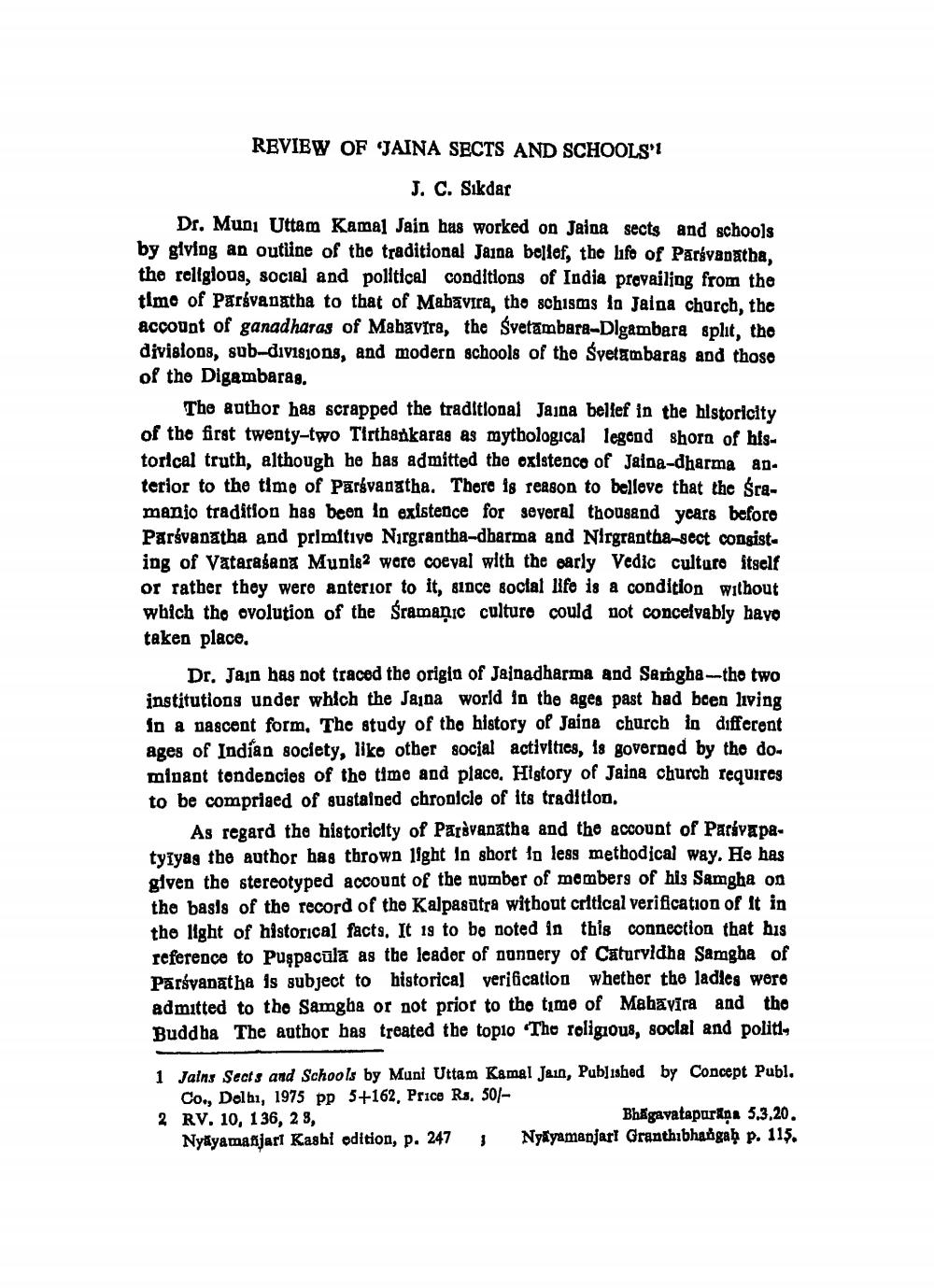________________
REVIEW OF "JAINA SECTS AND SCHOOLS'I
J. C. Sikdar Dr. Muni Uttam Kamal Jain has worked on Jalna sects and schools by giving an outline of the traditional Jaina bellef, the life of Parsvanatha, the religious, social and political conditions of India prevailing from the time of Parsvanatha to that of Mahavira, tho schisms la Jaina church, the account of ganadharas of Mahavira, the Svetambara-Digambara split, the divisions, sub-divi8jons, and modern schools of the Syetambaras and thoso of the Digambarag.
The author has scrapped the traditional Jaina bellef in the historicity of the first twenty-two Tirthankaras as mythological legend shora of historical truth, although he has admitted the oxistence of Jaina-dharma an. terior to the time of Parsvanstha. There is reason to believe that the śramanio tradition has been in existence for several thousand years before Parsvanatha and primitive Nirgrantha-dharma and Nirgrantha-sect congist. ing of Vatarabans Munis2 were coeval with the early Vedic culture itself or rather they were anterior to it, since social life is a condition without which the ovolution of the śramanic culture could not concelvably hayo taken place.
Dr. Jajn has not traced the origin of Jainadharma and Samgha--the two institutions under which the Jajna world in the ages past had been living in a nascent form. The study of the history of Jaina church in different ages of Indian society, like other social activities, is governed by the do. minant tondencies of the time and place. History of Jaina church requires to be comprised of sustained chronicle of its tradition,
As regard the historicity of Parsvanatha and the account of ParávapatyTyag the author has thrown light In short in less methodical way. He has given the stereotyped account of the number of members of his Samgha on the basis of the record of the Kalpasutra without critical verification of it in the light of historical facts. It is to be noted in this connection that his reference to Puşpacūla as the leader of nonnery of Caturvidha Samgha of Parávanatha is subject to historical verification whether the ladies woro admitted to the Samgba or not prior to the time of Mahavira and the Buddha The author has treated the toplo The roligious, soclal and politi,
1 Jains Sects and Schools by Muni Uttam Kamal Jain, Published by Concept Publ.
Co., Delhi, 1975 pp 5+162, Price Rs. 50/2 RV. 10, 136, 23,
Bhigavatapariga 5.3.20. Nyayamafjarl Kashi odition, p. 247 Nyayamanjart Granthibhangaḥ p. 115.




